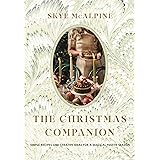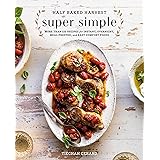In a world often seeking novel culinary experiences, sometimes the most profound stories are found in dishes that have graced tables for centuries. Such is the case with M’jaddara, a humble yet hearty dish whose roots stretch back to a 13th-century Iraqi cookbook. As eloquently discussed in the accompanying “Vegans For Palestine Podcast – Episode 16,” m’jaddara is far more than just a blend of lentils, rice, and caramelized onions; it is a tapestry woven with threads of history, culture, resilience, and identity, particularly for Palestinians.
M’jaddara: More Than Just a Meal
Often considered the quintessential Palestinian vegan dish, m’jaddara holds a place of deep reverence and comfort. Its enduring appeal across the Arab world, from Syria to Jordan, Lebanon, and Palestine, showcases its remarkable versatility and fundamental goodness. Whether known as m’jaddara, mujaddara, or dardara, this dish transcends religious and cultural boundaries. It graces the tables of Druze communities, is a traditional kosher meal for Sephardic Mizrahi Jewish families, and finds a close cousin in South Asia’s kitchari, a similar blend of rice and lentils with comparable cultural weight in India and Pakistan.
The folklore surrounding m’jaddara is as rich and layered as its flavor. One enchanting tale speaks of a Levantine mother who named the dish after its pitted appearance, reminding her of her daughter’s chickenpox. Palestinians, with their deep connection to the land and its sustenance, sometimes call it “the nails of the needy” – a poignant reference to its iron-rich lentils that build strength and fortify the body. Furthermore, Syrian Christians embrace it as the centerpiece of Monk Monday, the first day of Orthodox Lent, where it symbolizes abundance, humility, and spiritual reflection. These stories underscore m’jaddara’s deep cultural penetration and its multifaceted meanings.
A Culinary Journey Across the Levant
At its heart, m’jaddara is a celebration of simple, wholesome ingredients: lentils, grains (either rice or bulgur), and golden, caramelized onions. This classic trio has remained largely unchanged for centuries, a testament to its perfect harmony. The preparation, often passed down through generations, involves cooking lentils until tender, then incorporating soaked rice or bulgur. The dish is finally crowned with onions slowly sautéed in olive oil until they achieve a sweet, crispy perfection, adding an indispensable layer of flavor and texture.
Rice or Bulgur: A Tale of Two Traditions
The choice between rice and bulgur in m’jaddara often sparks a lively debate, reflecting geographical and traditional preferences more than questions of authenticity. Urban and coastal areas, where rice was historically more accessible, tend to favor rice-based versions. Conversely, bulgur variations are more prevalent in rural, wheat-growing regions. Both approaches, however, honor the same principle: the comforting union of lentils, onions, and grains. The interviewees highlight that bulgur, being quicker to cook than white rice, might have also been a practical choice in communities where resources or time were more constrained. Regardless of the grain used, the essence of m’jaddara remains its profound ability to bring people together, symbolizing unity and community through shared sustenance.
The Comfort of M’jaddara: A Naturally Vegan Staple
For those embracing a plant-based diet, m’jaddara stands out as a naturally vegan dish that truly satisfies. As one speaker passionately notes, it’s a dish so beloved, it can be a declaration of love. It’s heartwarming, nutritious, and incredibly versatile—equally delicious served hot off the stove, perhaps with the coveted, flavorful bits scraped from the bottom of the pan, or enjoyed cold as leftovers. Its typical accompaniment, salata fallahiyeh (a simple salad of cucumbers, tomatoes, olive oil, lemon juice, and salt), provides a refreshing counterpoint, enhancing the overall experience. For non-vegans, a side of cool yogurt or labneh often complements its warmth, creating a delightful blend of temperatures and textures. This natural veganism positions m’jaddara as a beacon for those seeking authentic Arab plant-based cuisine beyond the more commonly recognized falafel and hummus.
The Art of Simple Ingredients
What makes m’jaddara truly magical is its reliance on just a few simple, accessible, and inexpensive ingredients. This quality has earned it the moniker “aklit el fakir” or “the poor man’s food” – a term that, while acknowledging its affordability, inadvertently diminishes its esteemed status. In reality, the ability to create such a satisfying, nutritious, and filling meal from basic staples like rice, lentils, and onions speaks to a profound culinary wisdom. It’s a dish that “never fails,” offering reliability when resources are scarce or time is short, capable of feeding a large family or even an entire community from a single pot. This abundance derived from simplicity is, in fact, a sign of richness, not poverty.
Furthermore, m’jaddara is an excellent example of a “carb on carb” meal that, combined with protein from the lentils, provides sustained energy. This makes it ideal for physical labor, such as gardening as a fallahi (farmer), or for long journeys under the Palestinian sun. Dietitians often recommend combining raw vegetables with protein, and the traditional pairing with salata fallahiyeh perfectly meets this nutritional advice. Another key ingredient, often used in both m’jaddara and its winter counterpart, shortbet adas (lentil soup), is cumin (kamoun), known for aiding the digestion of lentils.
M’jaddara: A Symbol of Resilience and Resistance
Beyond its culinary appeal, m’jaddara carries immense historical and political weight, especially within the Palestinian context. It embodies a narrative of survival, cultural continuity, and profound resistance against external forces.
Echoes of the Nakba and Food Insecurity
The significance of m’jaddara deepened tragically after the 1948 Nakba, the forced displacement of Palestinians. Colonialism, particularly British colonization, and subsequent Zionist actions compounded poverty within Palestine. In the aftermath of the Nakba, as the UN distributed basic foodstuffs in refugee camps, lentils (adas), rice, and cooking oil became staple rations. Consequently, a beloved, easy-to-make, and affordable Palestinian dish transformed into a symbol of survival—a memory of home in displacement. Rosemary Sayigh, a Palestinian elder who lived through the Nakba and authored “Palestinians from Peasants to Revolutionaries,” extensively researched refugee camp food patterns, highlighting how m’jaddara and adas functioned as crucial food security during hard times, harvest gaps, and economic downturns. This historical context reveals how an esteemed cultural dish became a forced staple, yet also a powerful symbol of resilience.
Today, this resonates with harrowing urgency in Gaza, where a man-made famine forces restrictive eating habits. The tragic irony is that while those outside Gaza might choose m’jaddara in summer and lentil soup in winter, the people of Gaza often have no such choice. If red lentils are all that’s available in summer, then red lentil soup it is. The disruption of lives, the murder of bodies, and the imposition of restrictive eating habits through colonization are starkly evident, pushing people to consume non-traditional animals like turtles or horses in their desperation. Even basic staples like lentils and rice are denied, leading to desperate measures like pro-Palestinian Egyptians attempting to float dried lentils in plastic bottles across the sea into Gaza—a testament to the dire circumstances.
Food as a Weapon and a Storyteller
Palestinian writers and poets, like the renowned Ghassan Kanafani, often use food as a powerful metaphor to convey themes of resilience, resistance, identity, loss, and legacy. Although Kanafani’s “Men in the Sun” (Rijal tahta al-Shams), published in 1962, might not explicitly mention m’jaddara, his works frequently feature bread, olive oil, oranges, and other staples as markers of poverty, exile, and the yearning for home. Olive oil, a binding ingredient in m’jaddara and countless other Palestinian dishes, further symbolizes the profound connection Palestinians have to their land. The ongoing settler attacks on olive trees—such as the recent uprooting of nearly 10,000 trees in Al-Mughayyir village—are not merely acts of vandalism; they are direct assaults on Palestinian heritage, economy, and their very connection to their country, demonstrating a clear understanding of food’s symbolic power.
This deep connection also explains the cultural practice of communal care, exemplified by stories of grandmothers during the Nakba who, upon buying lentils for themselves, would buy an equal amount to donate to families in refugee camps. Food, in this context, nurtures not only the body but also the spirit of community and mutual support in the face of adversity. M’jaddara, in this light, truly becomes a “warm hug from the inside,” nourishing both physically and emotionally, fostering a sense of warmth and continuity.
The Battle Against Cultural Appropriation
In addition to these struggles, Palestinian cuisine, including m’jaddara, faces constant cultural appropriation. What is often presented as “Israeli cuisine” is, in many cases, a rebranding and aggregation of Palestinian and broader Levantine Middle Eastern food, legacy, and traditions. Dishes like hummus, falafel, tabbouleh, msakhan, maqloubeh, knefeh, labneh, zaatar, and stuffed vegetables are frequently claimed without acknowledgment of their origins. This “theft,” as some rightly call it, is not merely about food; it’s an extension of the broader colonial project—an attempt to erase identity and history. M’jaddara, a dish with deep Levantine roots and variations across Syria, Lebanon, and Egypt (where it contributes to koshary with chickpeas and pasta), is no exception. Its long history and widespread presence underscore that Palestinian food is an integral part of a rich, ancient culture, fiercely protected against attempts at erasure.
A Dish Woven into Palestinian Identity
Ultimately, the conversation around m’jaddara quickly expands beyond the kitchen, touching upon politics, economy, agriculture, and identity. It is a profound example of how food is not just what we consume; it is ancestry, culture, fallahi (peasant) life, and an everyday lived experience. It embodies cultural continuity and represents resistance to occupation and colonialism, highlighting the broader impact of forced displacement and food insecurity. By sharing the story of Palestinian m’jaddara, we reclaim a narrative, decolonize perceptions, and celebrate the enduring spirit of a people intricately linked to their land and their traditions.











